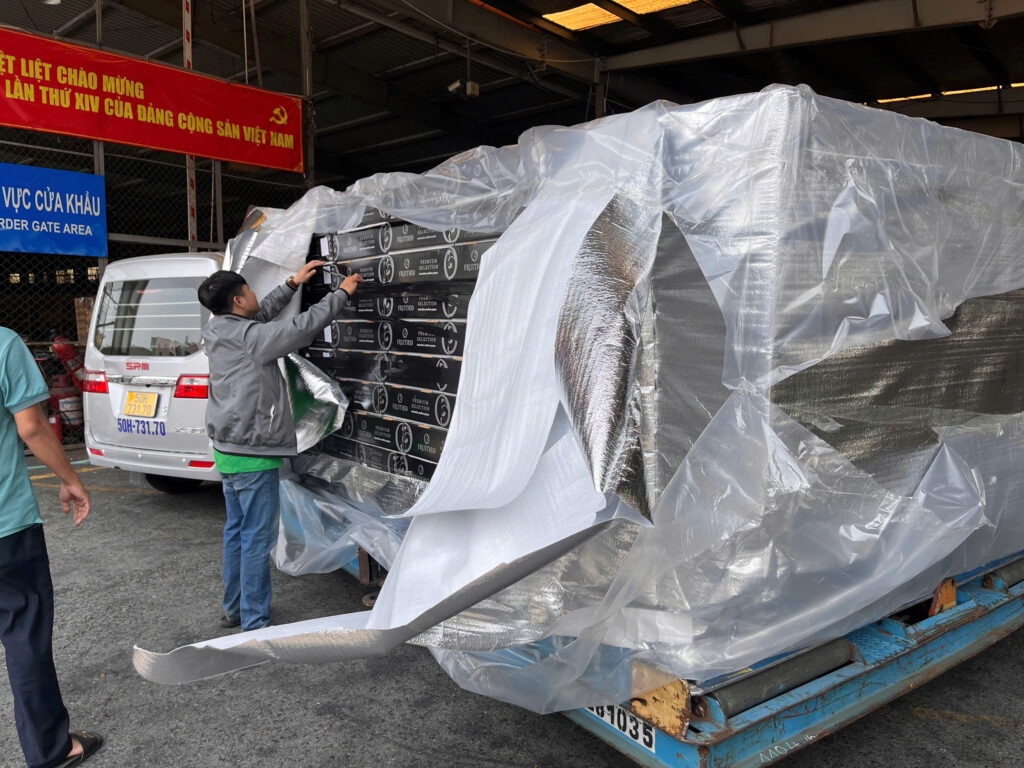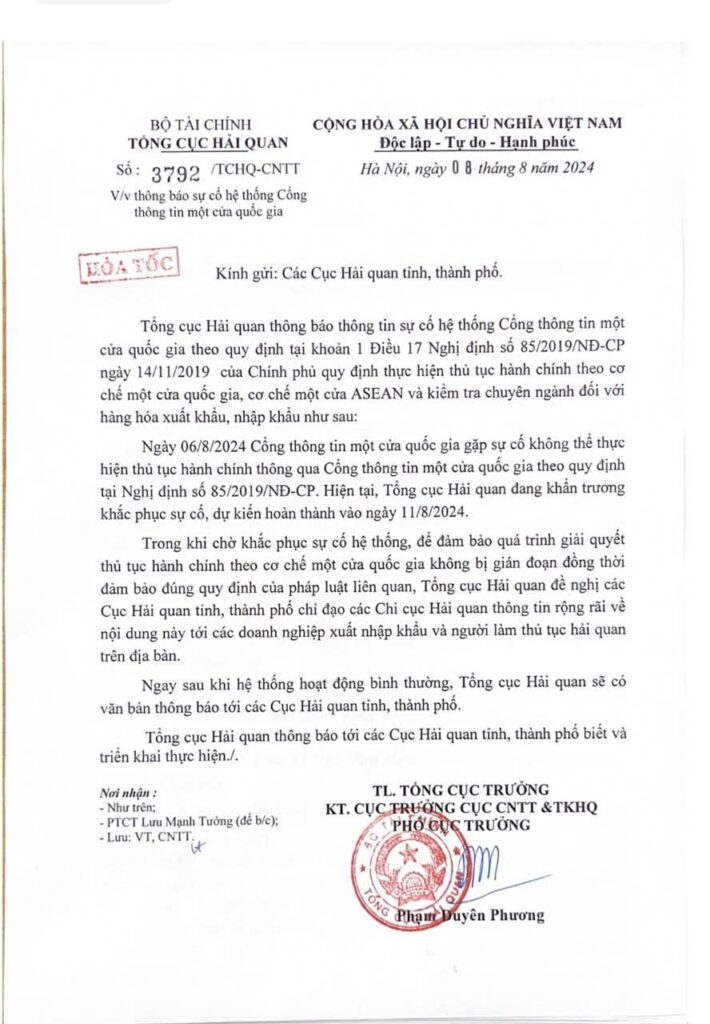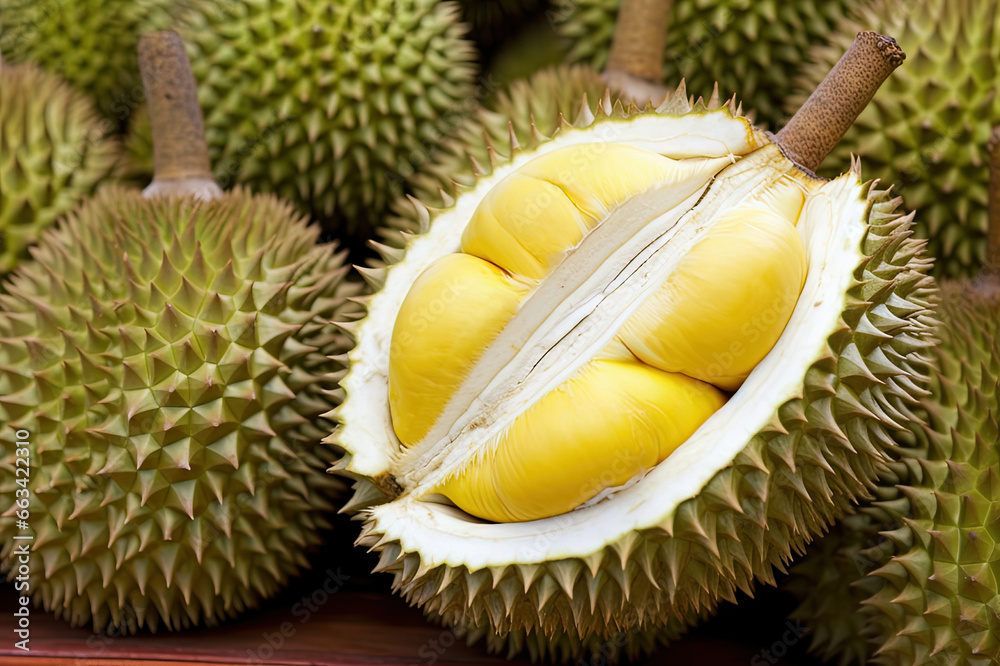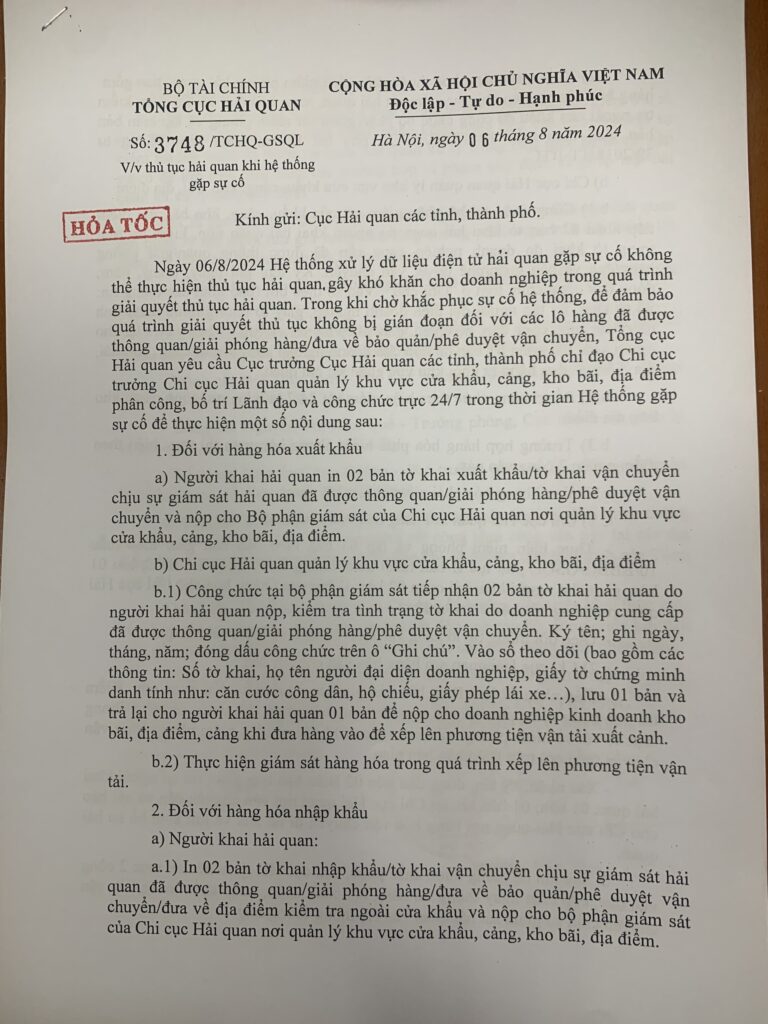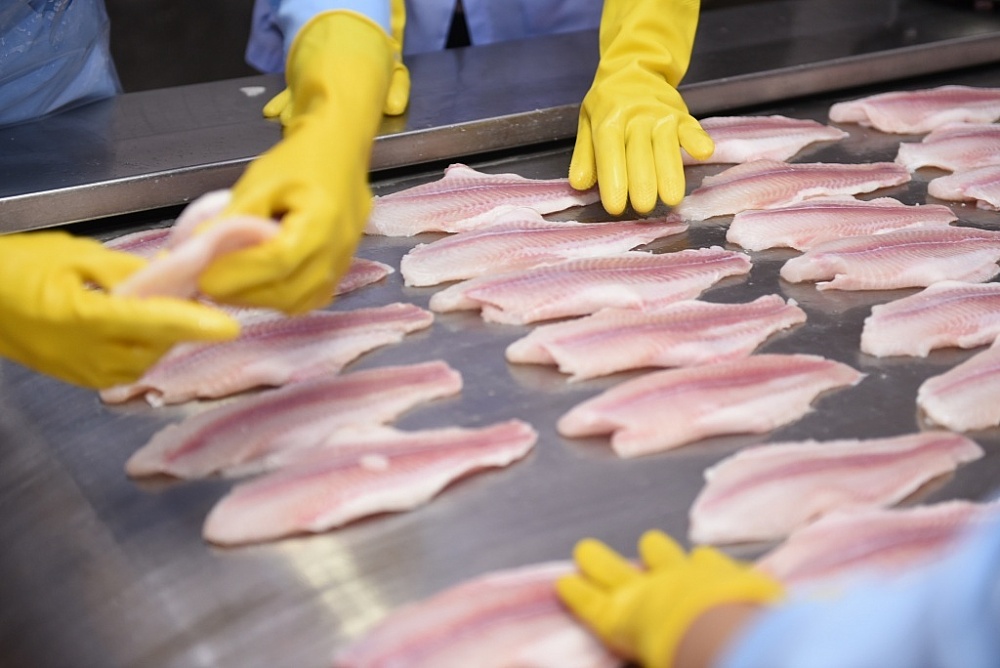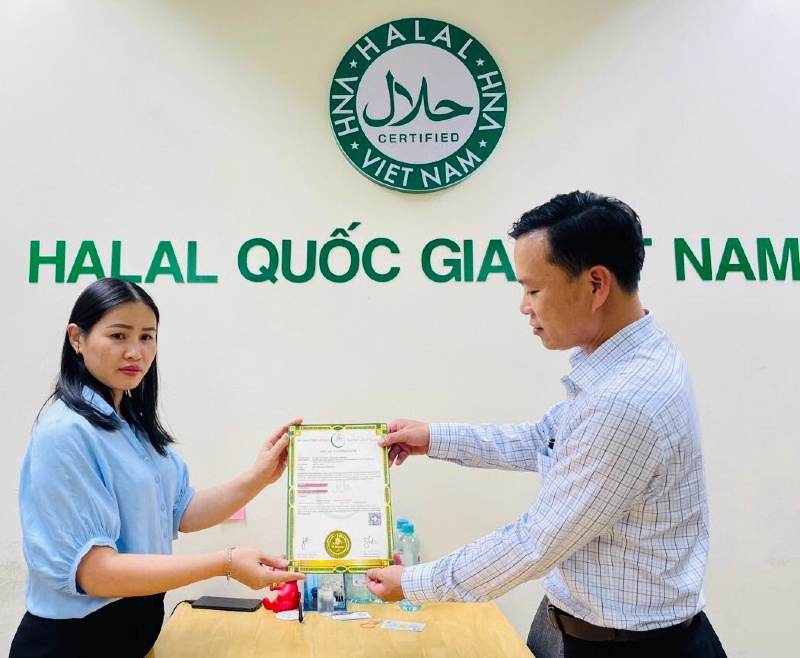As soon as you set foot on Tam Hiep Island, the cool green color from the longan and coconut gardens seemed to envelop everyone. On the country road during the ripe longan season, many traders are busy buying goods.
Located in the middle of the Tien River with vast waves on all four sides, Tam Hiep Island (Tam Hiep commune, Binh Dai district, Ben Tre province) is commonly known by the people here as Con Tau, because from a distance it looks like a ship sailing. stretch out to sea.
Tam Hiep Island is completely separate from the mainland, traffic is difficult, economic development of the people is difficult.
Currently, the local government and the people join forces to complete the new rural construction program, helping Tam Hiep island commune transform and develop strongly.
Focus on economic development
If in the past, if you wanted to go to Tam Hiep island commune, you had to wait for a long time for the ferry, only motorbikes were allowed to pass, but now the traffic connecting Tam Hiep commune has become increasingly convenient, people's goods and agricultural products are transported. easy.
Mr. Nguyen Van Chan (78 years old, resident of Tam Hiep commune) said that after the South was completely liberated and unified, realizing that Tam Hiep island had fertile land, he and his family came here to establish Karma.
Mr. Chan shared that although Tam Hiep has many difficulties, this island formed from alluvium is blessed by nature, so the land is fertile and convenient for growing crops, especially fruit trees.
Mr. Chan recalls that in the past, if he wanted to go to Tam Hiep, he had to take a canoe, take a boat, and then walk home. His family mainly grew rice. Later, when growing conditions improved, growing fruit trees became more effective, then they switched to growing oranges and longans until today.
According to Mr. Chan, people are very happy because traffic has now developed, helping people's economy improve.
Now to get to Tam Hiep island, in addition to the Phu Thuan-Tam Hiep ferry, which is a large ferry that can carry cars, there are also 3 smaller ferry wharves including: Long Dinh wharf via Tam Hiep, Tam Hiep wharf via Hoa Dinh (Tien Giang). , Tam Hiep wharf via Tan Thoi (Tien Giang). The wharfs are spread along the length of the dune to facilitate people's travel back and forth to the mainland.
As soon as you set foot on Tam Hiep Island, the cool green color from the longan and coconut gardens seemed to envelop everyone. Wherever you go in the island commune, you will see the green shade of the garden all year round. On the country road during the ripe longan season, many traders are busy buying goods from people.
Mr. Phan Van Khoi (living in hamlet 4, Tam Hiep commune) said his family has been cultivating nearly 1 hectare of yellow rice longan for more than 20 years. Thanks to his understanding of the longan plant, Mr. Khoi proactively mastered the technique of off-season flowering, thus providing a good income to help his family have a good fortune and take care of his children's education. Currently, each year Mr. Khoi's family harvests 6 to 7 tons of longan, bringing in a profit of about 120 million VND.

Mr. Khoi shared that people's economy depends mainly on fruit gardens, many well-off families also rely on longan and coconut gardens. Among them, the yellow rice longan tree is considered the most suitable tree for the local soil. The longan fruit from Tam Hiep island is shipped to all markets inside and outside the province. In recent years, due to the impact of the epidemic, exports have not been possible, but people still make a living thanks to longan trees.
Currently, the entire Tam Hiep commune has 569.8 hectares of longan, 113.5 hectares of coconut, the remaining about 20 hectares are other crops such as green grapefruit, ginseng, kumquat, lemon...
Besides developing specialty crop growing areas that bring high economic efficiency, Tam Hiep people also cooperate to develop garden eco-tourism.
Mr. Nguyen Thanh Cuong, Tam Hiep commune, shared that growing ginseng trees brought high economic efficiency. In 2011, Mr. Cuong decided to convert 6,000 square meters of ineffective garden land to the model of growing dew trees. Ginseng takes leaves because there is a large market demand, especially in the hot season.
He said that from the success of this model, in recent years his family has provided seeds, technical support and purchased ginseng dew leaf products in many localities across the country.
Currently, Mr. Cuong's family is also affiliated with a business that produces packaged ginseng leaf powder and ginseng leaf masks for sale to the market.
In addition, Mr. Cuong also cooperates with tourist attractions in the commune to welcome tourists to visit, take photos and enjoy fresh ginseng jelly right at the garden. Every month, his garden welcomes 300-500 visitors (mainly foreigners) to visit and experience.
The collective economy of Tam Hiep island commune is also gradually forming and developing. The locality will build a concentrated production area and develop the value chain of key agricultural products by improving the operational efficiency of Tam Hiep Agricultural Cooperative and 4 longan growing cooperative groups. Currently, the cooperative has 107 members specializing in growing longan and green coconut.
Director of Tam Hiep Agricultural Cooperative Nguyen Trung Dung said that the cooperative is producing the product "Nan Xi Muoi" which is granted a 3-star OCOP product certificate. In the coming time, the cooperative will upgrade the product "Nan xi muoi" and develop a new product, "Tac xi muoi."
At the same time, the cooperative is coordinating with the Commune Farmers' Association to prepare documents for coconut growing area codes of more than 65 hectares, with 101 households participating, aiming for export, contributing to completing the value chain and increasing income for farmers. local farmers.
Building new countryside
Chairman of the People's Committee of Tam Hiep commune Nguyen Huu Tho shared that in order for Tam Hiep to transform and develop, the locality focuses on implementing criteria in building new rural areas, especially criteria on rural transportation. When starting to build new rural areas, the local area was very difficult because the land was an island that was only accessible by water. Road traffic has only one road through the island, 8.4km long, of which 1.7km from the ferry port to the Commune People's Committee is paved with asphalt, the rest is only paved with stone or road. land.
Mr. Nguyen Huu Tho said that transportation makes an important contribution to people's economic development. Currently, the 8.4km long traffic road in the center of Tam Hiep island commune with a cost of 27 billion VND is being invested and built.
In addition, the landslide prevention embankment combined with storm surge prevention dike project with a total investment of more than 325.6 billion VND from the Central budget will be completed in 2024. Once completed, transportation infrastructure will promote promote economic development in the commune increasingly.
Responding to the movement to build new rural areas, many individuals on the island donated land, contributed labor and money to build concrete roads to make travel convenient.
Typically, Mr. Nguyen Van Tung's household (living in hamlet 4, Tam Hiep commune) donated nearly 2,000 square meters of land worth hundreds of millions of dong to build rural transportation projects. In addition, he also contributed tens of millions of dong to build roads.
As for Mr. Nguyen Van My's family, he mobilized his children and grandchildren to contribute over 100 million VND and thousands of labor days to re-concrete the more than 2km long inter-hamlet flank road and build an inter-hamlet bridge 27m long and 3 meters wide. 4m, facilitating the travel of people and students.
According to the People's Committee of Tam Hiep commune, the locality is currently investing in building roads, anti-erosion dikes, school buildings, medical stations, cultural houses... so economic and cultural life, The people's society has been significantly improved.
From the 4 criteria achieved when starting to build new rural areas in 2011, after 10 years, Tam Hiep commune achieved 8 more criteria.
In 2023, the commune will complete 4 criteria and strive to complete all criteria in 2024 to be recognized as a new rural commune.
According to Chairman of the People's Committee of Tam Hiep commune Nguyen Huu Tho, due to a low starting point and the unique geographical conditions of an island commune, the Steering Committee for new rural construction in Tam Hiep commune outlined a long-term, focused plan. Invest all resources to build and improve the quality of new rural areas. Tam Hiep island commune is gradually developing its economy with strengths in fruit gardens and community-based eco-tourism. Previously, the commune's poverty rate was above 25%, currently the government and people in the commune strive to reduce it to below 4% by the end of 2023.
Standing Vice Chairman of the People's Committee of Binh Dai district, Vo Van Quan, said that Tam Hiep island commune is investing in works and projects to serve socio-economic development in order to soon complete the criteria in construction. new countryside. Currently, the district focuses on investing in 3 criteria including schools, cultural facilities and roads to strive to bring Tam Hiep island commune to new rural standards by early 2024./.
Read the original article here This.

